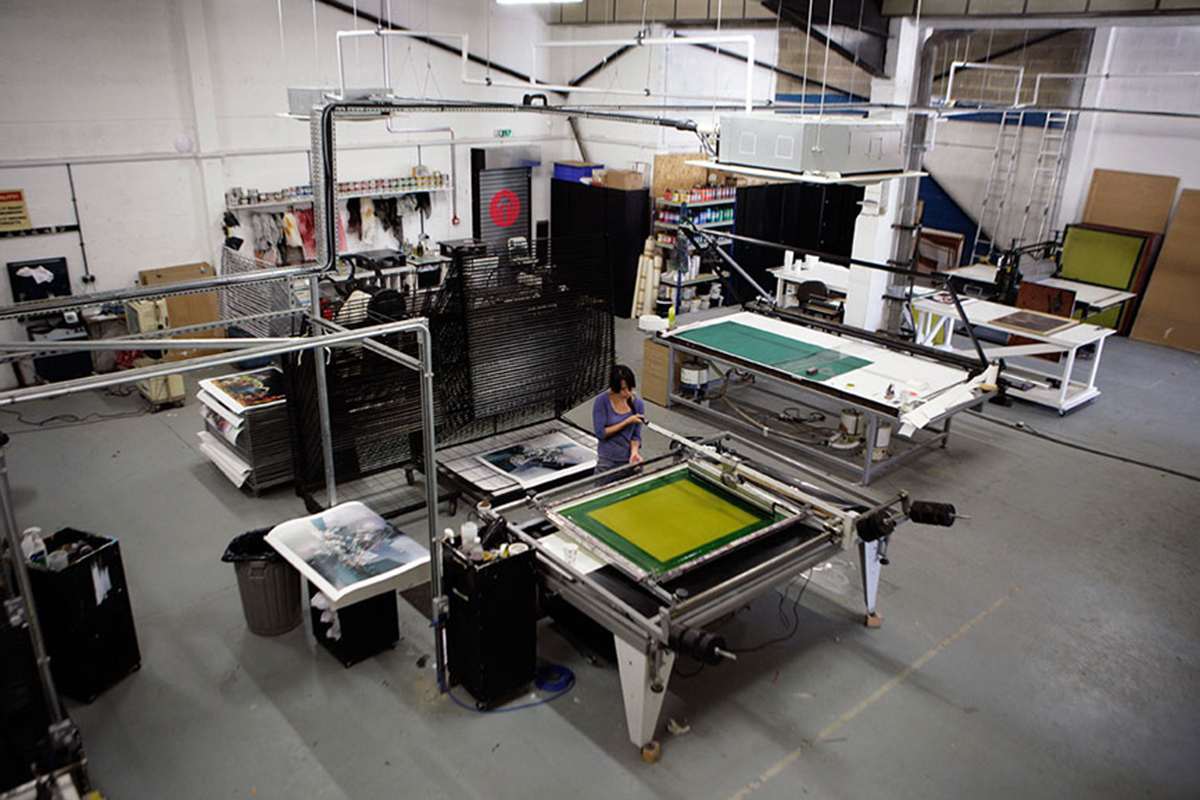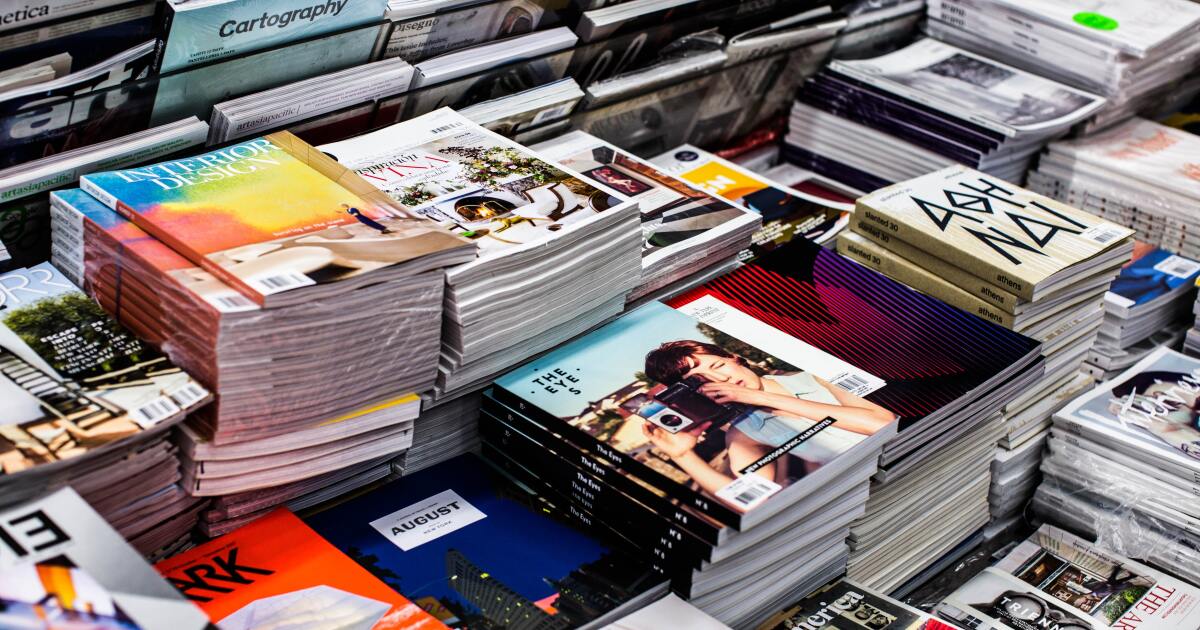History of Publishing & Printing
Publishing & Printing – Publishing and printing have a rich and storied history, dating back to ancient times. The earliest forms of publishing involved the creation of handwritten manuscripts, which were often painstakingly copied by scribes.
The invention of the printing press by Johannes Gutenberg in the 15th century revolutionized the publishing industry. For the first time, it became possible to produce large quantities of printed materials quickly and relatively inexpensively. This led to a dramatic increase in the availability of books and other printed materials, which in turn had a profound impact on society and culture.
Impact of the Printing Press
The printing press had a profound impact on society and culture. It led to the widespread dissemination of knowledge and ideas, which in turn contributed to the rise of the Renaissance and the Reformation. The printing press also played a major role in the development of science and technology, as it made it possible for scholars to share their findings with a wider audience.
In addition to its impact on society and culture, the printing press also had a significant impact on the economy. The increased availability of printed materials led to the growth of the publishing industry, which in turn created new jobs and stimulated economic growth.
Methods of Publishing & Printing

The world of publishing has undergone a significant transformation in recent years, with the advent of digital technology. Today, there are numerous methods of publishing available to authors, each with its own advantages and disadvantages.
Traditional Publishing
Traditional publishing involves working with a publishing house, which handles all aspects of the publishing process, including editing, design, marketing, and distribution. This method offers several advantages, including:
- Credibility and Prestige:Publishing with a reputable publishing house can lend credibility to an author’s work and enhance its visibility.
- Professional Editing and Design:Publishing houses employ experienced editors and designers to ensure the quality of the book’s content and presentation.
- Distribution and Marketing:Traditional publishers have established distribution channels and marketing expertise, which can help authors reach a wider audience.
However, traditional publishing also has some drawbacks:
- Limited Control:Authors have less control over the creative process and the final product when working with a traditional publisher.
- Competition:Authors face stiff competition to secure a book deal with a traditional publisher.
- Delayed Publication:The traditional publishing process can be lengthy, resulting in delays in the book’s publication.
Self-Publishing
Self-publishing involves publishing a book independently, without the involvement of a traditional publisher. This method offers several advantages, including:
- Complete Control:Authors have complete control over every aspect of the publishing process, from editing to marketing.
- Faster Publication:Self-publishing allows authors to publish their books quickly and efficiently.
- Higher Royalties:Authors earn a higher percentage of royalties on self-published books than on traditionally published books.
However, self-publishing also has some challenges:
- Lack of Credibility:Self-published books may lack the credibility and prestige associated with traditionally published books.
- Editing and Design Challenges:Authors may face challenges in finding professional editors and designers to ensure the quality of their books.
- Marketing and Distribution:Self-published authors must handle all aspects of marketing and distribution, which can be time-consuming and challenging.
Digital Publishing, Publishing & Printing
Digital publishing involves publishing books in electronic formats, such as e-books and audiobooks. This method offers several advantages, including:
- Accessibility:Digital books are easily accessible to readers worldwide, 24/7.
- Convenience:Readers can read digital books on a variety of devices, making it convenient and portable.
- Cost-Effective:Digital books are often less expensive than print books, making them more affordable for readers.
However, digital publishing also has some drawbacks:
- Lack of Physicality:Digital books lack the physicality and tactile experience of print books.
- Copyright Protection:Digital books are more susceptible to piracy and copyright infringement.
- Reading Experience:Some readers prefer the traditional experience of reading a physical book.
The Role of Technology in Modern Publishing
Technology has played a pivotal role in transforming the publishing industry. Digital tools and platforms have made it easier for authors to write, edit, design, and publish their books. Social media and online marketing have also expanded the reach and visibility of authors and their works.
Additionally, technology has led to the emergence of new publishing models, such as subscription services and self-publishing platforms. These models have provided authors with more options and flexibility in publishing their works.
As technology continues to advance, it is likely that the publishing industry will continue to evolve. New technologies may emerge that further enhance the authoring, publishing, and reading experience.
Types of Publications

Publications encompass a wide range of formats, each with distinct characteristics and target audiences. Understanding the different types of publications is crucial for navigating the diverse media landscape and effectively reaching specific readerships.
Books
- Characteristics:In-depth written content, typically organized into chapters and bound together. Books offer comprehensive coverage of a topic, providing detailed information and analysis.
- Target Audience:Readers seeking knowledge, entertainment, or personal growth.
Magazines
- Characteristics:Regularly published periodicals that cover a specific topic or niche. Magazines provide timely articles, features, and interviews.
- Target Audience:Individuals interested in current events, specialized topics, or specific lifestyles.
Newspapers
- Characteristics:Daily or weekly publications that report on current events and provide information on a variety of topics. Newspapers offer up-to-date news and analysis.
- Target Audience:Individuals seeking immediate news and information.
Online Content
- Characteristics:Digital publications accessible through the internet, including websites, blogs, and social media platforms. Online content offers real-time information, multimedia elements, and interactive features.
- Target Audience:Individuals seeking instant access to news, information, and entertainment.
Challenges and Opportunities in the Digital Age
The digital age has presented both challenges and opportunities for different types of publications:
- Challenges:Declining print readership, increased competition from online sources, and the need to adapt to changing reader habits.
- Opportunities:Expanded reach through online platforms, multimedia capabilities, and the potential for targeted advertising and engagement.
Design & Layout
Design and layout are crucial aspects of publishing that involve organizing and presenting textual and visual content in a visually appealing and reader-friendly manner. Effective design and layout techniques enhance the readability, accessibility, and overall impact of publications.
Principles of Design & Layout
- Hierarchy:Arranging elements in a way that establishes a clear visual order, guiding the reader’s attention.
- Balance:Distributing elements evenly across the page to create a harmonious and stable visual appearance.
- Contrast:Using different visual elements (e.g., colors, fonts, sizes) to create emphasis and draw attention to specific areas.
- Proximity:Grouping related elements together to indicate their relationship and improve readability.
- White Space:Utilizing empty space to enhance readability, create visual interest, and guide the reader’s eye.
Examples of Effective Design & Layout
Examples of effective design and layout techniques include:
- Using a clear and legible font size and typeface.
- Breaking up long blocks of text with subheadings, bullet points, and images.
- Using contrasting colors to highlight important information.
- Incorporating white space around text and images to improve readability.
- Creating a consistent visual style throughout the publication.
Importance of Visual Appeal & Readability
Visual appeal and readability are essential considerations in design and layout. A visually appealing publication attracts readers and encourages them to engage with the content. Readability ensures that the text is easy to read and understand, enhancing the overall user experience.
Marketing & Distribution: Publishing & Printing
Marketing and distributing publications involve various strategies to reach target audiences and promote the publication’s content effectively. In the digital age, a combination of traditional and digital channels is essential to maximize visibility and engagement.
Role of Social Media, Online Advertising, and Traditional Marketing Channels
Social media platforms offer immense opportunities for publishers to connect with potential readers, share excerpts, and build a community around the publication. Online advertising through search engines, display ads, and social media campaigns can target specific demographics and interests, expanding the reach beyond existing followers.
Traditional marketing channels such as print advertising, direct mail, and public relations still hold value, particularly for reaching niche audiences or promoting high-profile publications. A combination of these channels ensures a comprehensive marketing strategy that caters to diverse audience segments.
Challenges and Opportunities for Reaching Target Audiences in the Digital Age
The digital age presents both challenges and opportunities for reaching target audiences. The sheer volume of content online can make it difficult for publications to stand out and gain visibility. However, advancements in digital technology also offer opportunities for personalized marketing, data-driven insights, and targeted distribution.
Understanding the specific demographics, interests, and online behavior of the target audience is crucial for effective marketing. By leveraging analytics and social listening tools, publishers can tailor their messaging and distribution strategies to resonate with their intended readers.
The Future of Publishing & Printing
The publishing and printing industry is undergoing a significant transformation, driven by the rapid advancement of digital technologies. As we look towards the future, it is evident that the industry will continue to evolve and adapt to meet the changing needs of readers and consumers.The rise of digital publishing has had a profound impact on the industry, leading to new opportunities for authors and publishers to reach a wider audience.
However, it has also presented challenges, such as the need to protect intellectual property and the increasing competition for readers’ attention.In the coming years, we can expect to see continued growth in digital publishing, as well as the emergence of new technologies that will further transform the way we produce, distribute, and consume publications.
Emerging Trends and Technologies
* Artificial Intelligence (AI):AI is playing an increasingly important role in the publishing industry, from automating tasks such as editing and proofreading to personalizing content recommendations for readers.
Blockchain
Blockchain technology has the potential to revolutionize the way we distribute and protect digital content, by providing a secure and transparent way to track and manage ownership.
Virtual and Augmented Reality (VR/AR)
VR/AR technologies are creating new immersive experiences for readers, allowing them to interact with content in ways that were previously impossible.
3D Printing
3D printing is making it possible to produce physical books and other publications on demand, reducing costs and lead times.
Challenges and Opportunities
The future of publishing and printing is not without its challenges. The industry will need to address issues such as:* Protecting Intellectual Property:The digital age has made it easier for people to copy and distribute content without permission, which poses a threat to authors and publishers.
Competition for Readers’ Attention
The abundance of content available online has made it more difficult for publishers to capture and retain readers’ attention.
Adapting to New Technologies
The rapid pace of technological change requires publishers and printers to continuously adapt their processes and business models.Despite these challenges, there are also significant opportunities for the industry in the coming years. By embracing new technologies and adapting to changing consumer demands, publishers and printers can continue to play a vital role in the dissemination of knowledge and entertainment.
Potential Impact on Production, Distribution, and Consumption
The emerging trends and technologies discussed above have the potential to significantly impact the way we produce, distribute, and consume publications:* Production:AI and other technologies can automate many tasks in the production process, reducing costs and lead times.
Distribution
Digital distribution channels are making it easier for publishers to reach a global audience, while new technologies like blockchain can improve the security and transparency of digital content distribution.
Consumption
VR/AR and other immersive technologies are creating new ways for readers to interact with content, while personalized content recommendations can help readers discover new and relevant publications.Overall, the future of publishing and printing is bright. By embracing new technologies and adapting to changing consumer demands, the industry can continue to play a vital role in the dissemination of knowledge and entertainment.